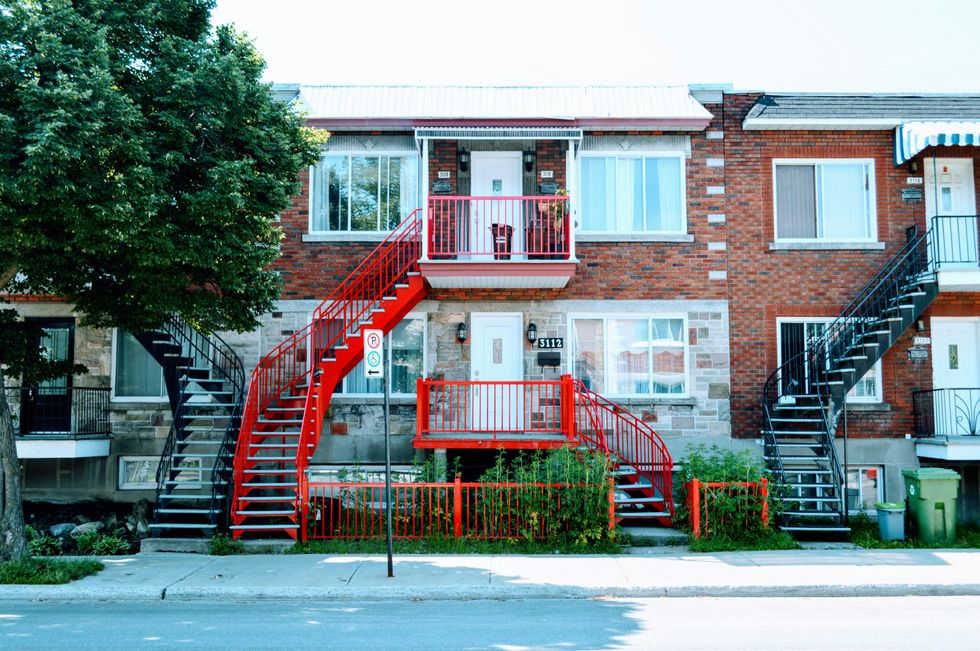In order to restore housing affordability by 2030, Canada's housing agency has estimated that we need to triple the rate of housing construction by building 5.8 million new homes. The federal government has also pledged to reduce greenhouse gas (GHG) emissions to 40% below 2005 levels by 2030.
Both goals are vital to Canada's mission of remaining a thriving, sustainable, and successful nation, but as a new study from the University of Toronto’s Faculty of Applied Science & Engineering finds, these two goals happen to be at direct odds with one another — that is, if current construction practices continue to be as unsustainable, inefficient, and cost-intensive as they are today.
The study, published in late-June, found that if we don’t see dramatic improvements in construction practices, Canada’s construction industry will be responsible for nearly half of national emissions by 2030. Even more disconcerting, in order to keep emissions below 2005 levels, we must achieve an 83% reduction in GHG emissions per home construction, according to the study.
Relying on economic data from 2018 that tracked the purchasing of construction materials, the team of researchers led by Dr. Shoshanna Saxe used a model that turns those numbers into carbon emissions. That data revealed that “to build all of the things we built in 2018, it took 90 megatonnes of GHGs — a tenth of all emissions from that year — but we also built less than a third as much housing that year than we say we now need to build every year,” Dr. Saxe tells STOREYS. “If we don't change things and just build more, we could be looking at 50% to 60% or more of Canada’s total allowable emissions by 2030, and that’s completely untenable.”

An 83% reduction in GHGs, while necessary, is an undeniably ambitious target, and one that some, including Richard Lyall, President of The Residential Construction Council of Ontario (RESCON), are doubtful the industry will be able to hit in time.
“It’s not possible,” Lyall tells STOREYS. “Could we build better? Sure. But we have a minor affordability problem and our regulatory system is so convoluted that after the amount of time it takes to get approval, nobody wants to try anything new. It has a chilling effect on innovation.”
In addition to notoriously long planning and approval periods, Lyall says that costs will be an added hindrance to change. “We know the problem and we know what the solutions are, but we’ve got to bring down the costs,” he says. “We tax housing like alcohol and cigarettes. Who does that? And the more you tax things the less money there is for innovation.”
Inefficiency, red tape, and high building costs must improve if the country wants to resolve housing affordability and stay within emission limits by 2030. But as Dr. Saxe points out, change is already underway in the form of policies meant to accelerate housing supply. The two efforts, she says, actually align in a huge way. And an added plus? Building sustainably is more cost effective than current practices.
First, what makes current practices so unsustainable? If you’re picturing excavators puffing smoke from their engines at a construction site, think bigger. Think embodied carbon.
Essentially, embodied carbon is all the GHGs that are released during the process of turning raw materials into things we construct buildings with. According to her team’s findings, manufacturing materials accounts for around 80-85% of a project’s emissions, with a mere 8% released during actual construction. Of course, turning iron ore into steel and limestone into concrete are unavoidable aspects of construction, but we simply don’t need to be manufacturing nearly as much as we currently are, explains Dr. Saxe. According to her, we can reduce material use by doing two simple things: building denser and building smarter.
We can eliminate a third of the problem by simply increasing density to ensure less infrastructure per person, explains Saxe. “If you build a house, and 100 metres away you build another one, then you need 100 metres of water pipes. But if you build a duplex, then that’s 100 metres of water pipe you don’t need,” she says. “You also get the advantages of shared walls and other efficiencies. The materials go down so the embodied GHGs go down.”

This is a trend already being encouraged by policymakers in the name of increasing housing supply, she says. But, of course, increased density also means less materials, and ultimately, less GHGs. “The push for single stair is very materially efficient, the push from the federal government for fourplexes, and the protection of the Greenbelt will stop us from building low-density, high-infrastructure areas. So there's lots to be optimistic about,” Saxe explains.
The other way we can reduce emissions is by building more efficiently. “We talk too much about magic materials,” she says. “The biggest win is to design better and use less materials in the first place.” Among the numerous ways we can achieve this, Saxe lists avoiding building basements, limiting underground parking garages and only allowing ones that are regular in shape, eliminating transfer slabs, aligning columns, and laying out our buildings better to require less hallway space to deliver more homes.
“These are all things we know how to do, these are all things well within our technical capacity,” says Saxe. Plus, developers stand to save money. “People generally think building sustainably will be more expensive, but that's old information, if you use less materials. And materials are like 50% of a projects’ cost.”
Saxe, a former consulting engineer herself, feels it’s important (and fiscally savvy) for developers to pay engineers and architects more to take the time to design a truly efficient building. This way they save money on needless materials in the long run.
Sam Dufaux, Principal at Toronto-based SvN Architects and Planners, agrees. “We don’t need to reinvent the wheel,” he tells STOREYS. Dufaux echoes what Dr. Saxe points out, saying that architects and engineers know what the solutions are and they know how to execute them. He discusses the need to eliminate things like angular planes, employ single-staircase design, and build more density around transit.
Dufaux, who hails from Europe, also points out that Canada doesn’t exist in a vacuum. “We need to look to other places, whether it be in North America, Europe, or places with similar lifestyles, ways of building, and industries, and see how they've been able to make progress,” he says. “We are way too slow here and way too conservative." He also acknowledges the “dark matter” of restrictive building codes and approvals that Lyall — and most Canadians — decry, but remains optimistic about Canada’s ability to adapt. “Eighty-three percent sounds like a big number, but it’s just because we are so bad right now,” he says with a laugh. “We can do a lot just by learning about best practices from other countries, without reinventing the wheel, and we’ll get there.”
For Saxe, the issue comes down to a simple choice for governments, policymakers, and developers to make. “The question is which way are we going to go,” she says. “We can follow through on the changes that are being motivated by the housing affordability crisis that align really well with embodied GHG reductions, or we could let everything go back to the way it was and just ignore both the monetary crisis and the environmental crisis.”





















